Melodies in a song are really the heartbeat of music because they have the power to captivate listeners, evoke various emotions, and bring your songs to life.
Plus, they make sure your tracks are memorable and engaging 一 standing out over the competition, which is key since things are so competitive in our field.
As a producer, understanding what is the melody of a song can really enhance your ability to create music that sticks with your audience all day long.
It also helps you knockout songs that are not only catchy but also deeply impactful.
That’s why we’re breaking down everything to help you answer the question, “what is the melody of a song,” like:
- The basic elements/components of a melody ✓
- Melodic lines and their significance ✓
- Understanding melodic motion ✓
- Melodic contour & other music theory basics ✓
- Different types of melodies ✓
- Creating vocal melodies & instrumental melodies ✓
- Harmonizing your melodies ✓
- Using repetition and variation ✓
- Advanced melodic techniques ✓
- How to identify melodies like a boss ✓
- Tools for creating your own melody ✓
- Much more to help you understand what is the melody of a song ✓
After reading this article, you’ll know everything about creating memorable melodies that resonate with listeners and take your tracks to the next level.
Plus, you’ll be able to experiment with advanced techniques and lay down professional-quality melodies all day.
This way, your tracks will always sound polished and stand out like a professional in the music industry.
So, let’s dive in…
Table of Contents
What is The Melody of a Song?
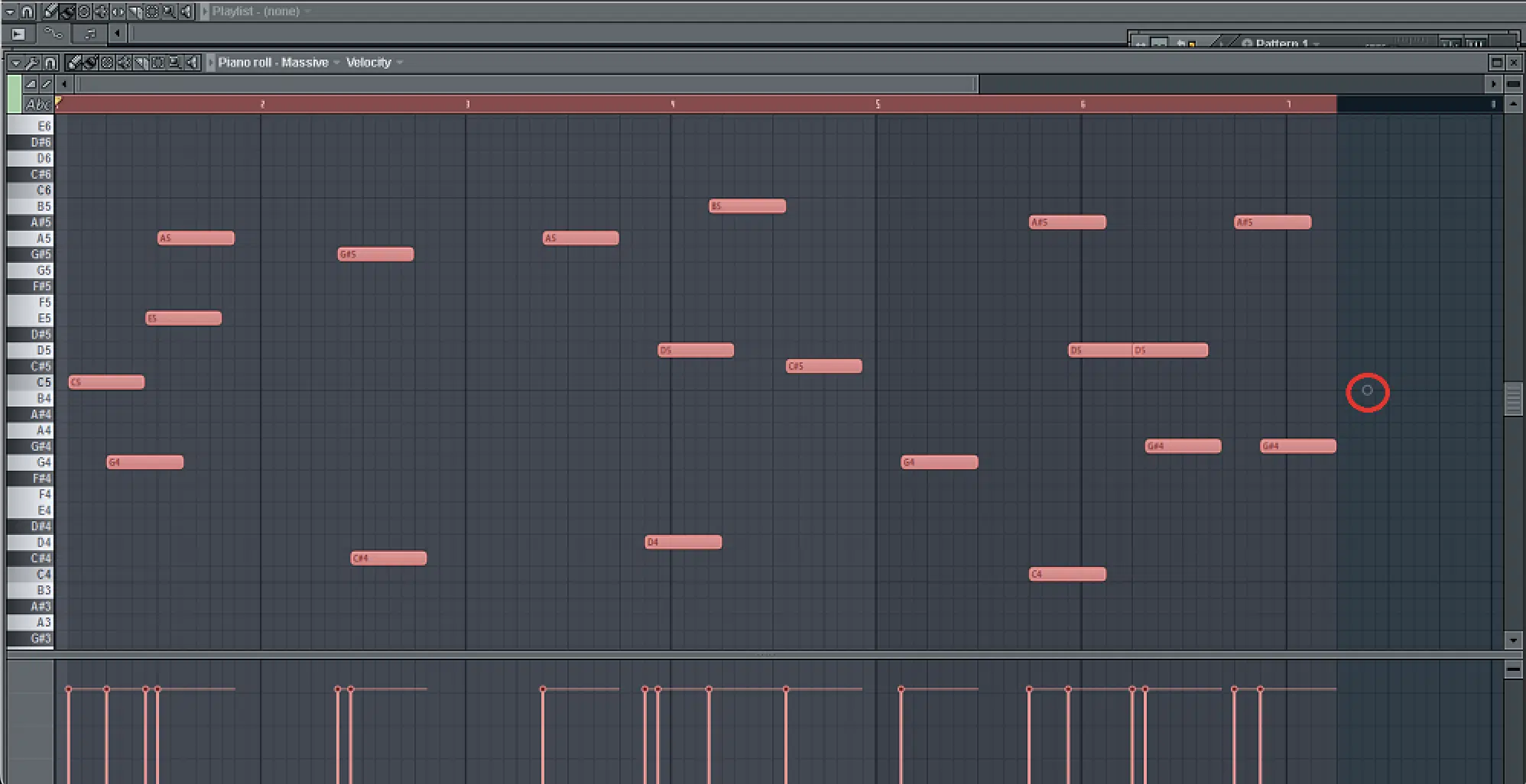
When you think about what makes a song stick in your head, it’s often the melody that comes to mind… But what is the melody of a song, exactly?
Well, to put it simply, the melody is the sequence of musical notes that listeners perceive as a single entity.
It’s what you hum or sing along to when your favorite song plays.
A melody can be made up of a series of single notes, often in combination with rhythm, harmony, and other elements that bring a musical composition to life.
We’ll be breaking it all down today (in detail), so you can really get the full picture.
Key Components of a Melody
To get a solid understanding of what is the melody of a song, let’s first break down its key components, because they form the backbone of any great melody.
-
Melodic Line
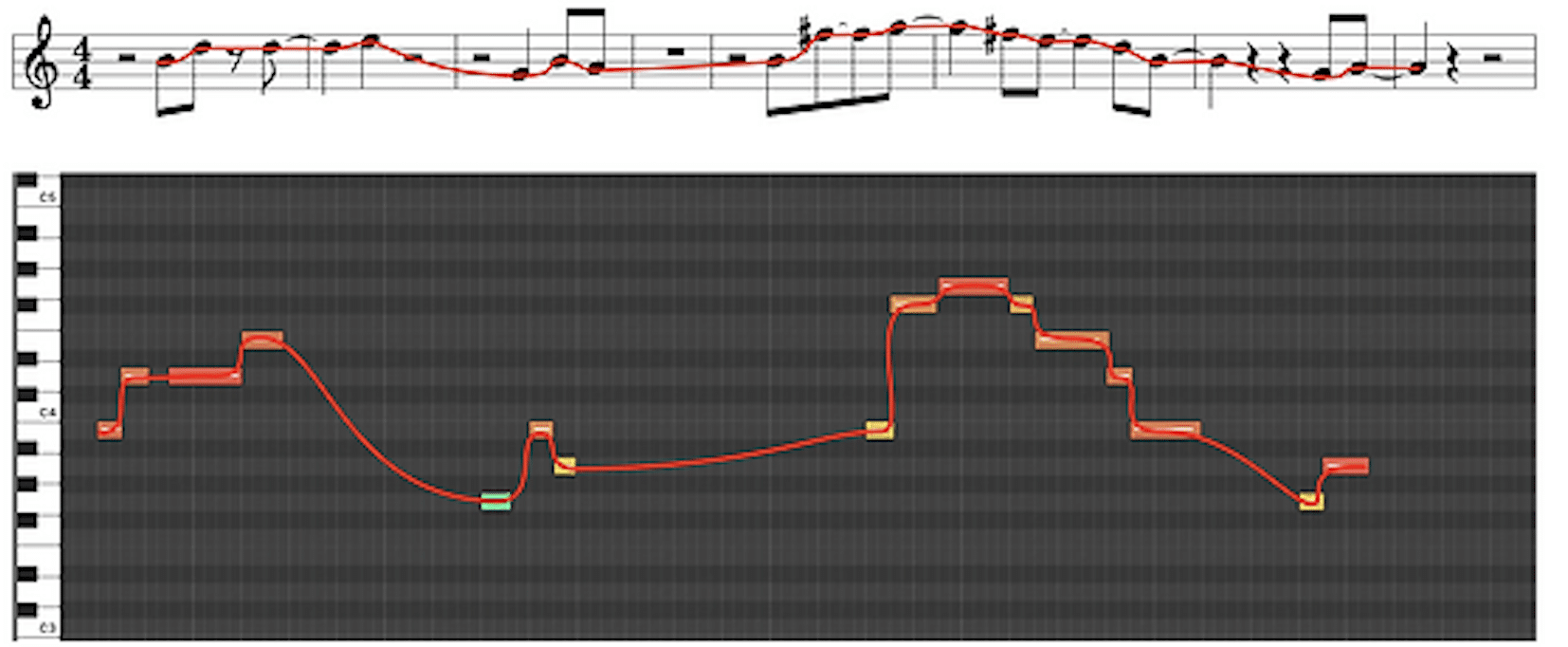
The melodic line is the central element of a song’s melody that acts as the main thread that listeners follow throughout the track (think: Happy Birthday).
It’s a sequence of musical notes that defines the character of the melody, whether it’s a:
- Vocal hook
- Synth lead
- Guitar riff
When producing your own melodic lines, you should always analyze how each note interacts with the rhythm and chord progression.
For example, in a pop track, you might use a simple melodic line played on a bright synth to create an infectious hook that repeats throughout the chorus.
This makes it super easy for listeners to latch onto and get lost in, which pop music is pretty much known for.
In EDM, the melodic line often drives the energy of the drop, with a powerful lead synth or bass melody that cuts through the mix.
Bottom line, a well-crafted melodic line should be memorable and serve as the focal point of your production 一 taking your listeners on a whole journey.
All while complementing other elements like the bass line and harmony.
-
Melodic Motion

Top: Conjunct Motion. Bottom: Disjunct Motion.
Melodic motion describes how a melody moves from one musical note to the next, defining the overall flow and direction of the melodic line.
There are two main types of melodic motion:
- Conjunct motion 一 Where the melody moves in small, stepwise intervals (often only two notes apart).
- Disjunct motion 一 Where the melody leaps across larger intervals.
Conjunct motion creates a smooth, connected feel in the melody, which is common in vocal music and many forms of popular music (e.g., hip-hop, trap, pop, R&B).
On the other hand, disjunct motion introduces more dynamic leaps, adding energy and tension, often seen in classical music and more complex melodies.
For example, a melody that alternates between conjunct motion and disjunct melodic motion can give off the perfect balance between smoothness and excitement.
Anything that makes the melody both memorable and engaging is great.
Understanding how to use melodic motion will help you write great melodies that can evoke specific emotions and keep listeners hooked from start to finish.
-
Melodic Contour
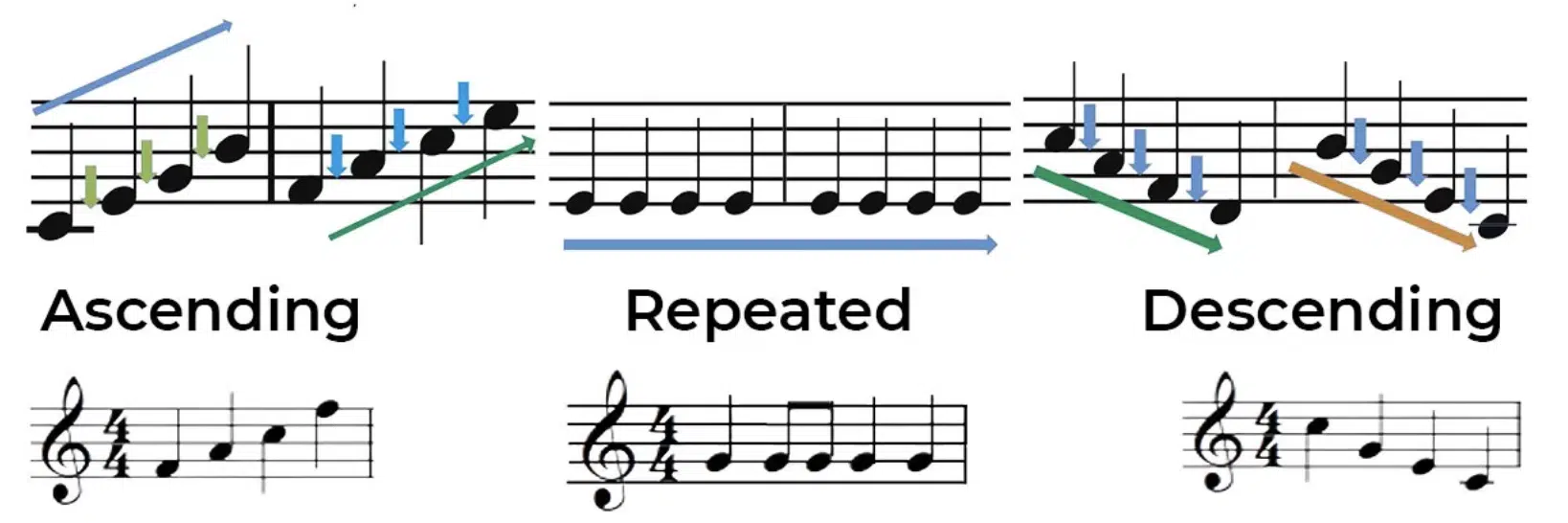
Melodic contour refers to the overall shape or direction that a melodic line takes as it progresses through a track, influencing how the melody will feel.
This contour is formed by the rising and falling of musical notes as they progress, creating a visual and auditory pattern that listeners can follow.
In music production, the melodic contour can dramatically affect the energy and emotion of a song, for example:
- A rising contour can build anticipation, which makes it perfect for a pre-chorus that leads into a high-energy drop in an EDM track.
- A descending contour can create a sense of resolution, making it ideal for the end of a phrase or the outro of a pop song.
When designing the melodic contour in your own tracks, consider how the melody’s rise and fall will complement the chord progression and bass line.
It ensures that it enhances the overall mood and drive of the music.
Using automation to gradually increase the pitch or intensity of a melodic line can also help create a dynamic contour that keeps the listener engaged throughout the track.
Types of Melodies
Melodies can take various forms of coure, each adding a unique flavor to a song. Understanding the different types of melodies will not only help you learn what is the melody of a song, but create a melody that fits your unique musical composition.
-
Vocal Melodies
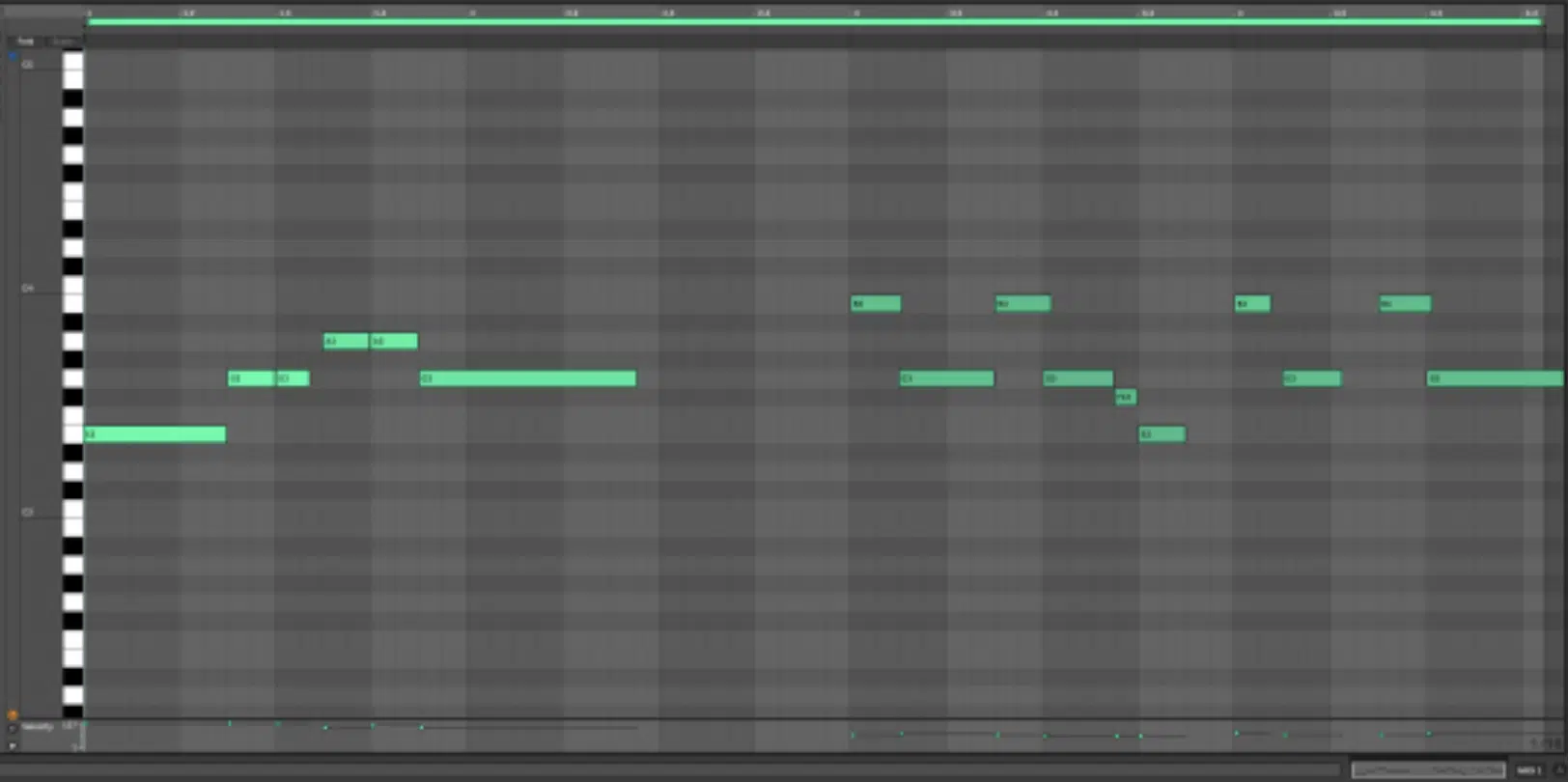
Vocal melodies are often the focal point of a song, carrying the lyrics and making the track really addicting and ‘Tik-Tok worthy,’ if you will.
When creating your own vocal melodies, you have consider the singer’s range and the emotional tone you want to convey.
Start by developing a melodic line that feels natural to sing, using conjunct motion for smooth, flowing phrases.
To make your vocal melody stand out, try experimenting with melodic contour by varying the pitch and rhythm within the melodic phrase.
For example, you might begin with a simple, repetitive phrase and then throw in a slight change in the melody note just to keep it interesting.
Always align your vocal melody with the underlying chord progression to ensure it fits perfectly into the overall musical composition.
NOTE: If you’re using vocal samples, make sure they fit within the key and tempo of your track to maintain a natural and fluid sound. Also, consider editing the pitch and timing of the samples to better align with your melodic line and enhance the overall feel of the melody.
-
Instrumental Melodies
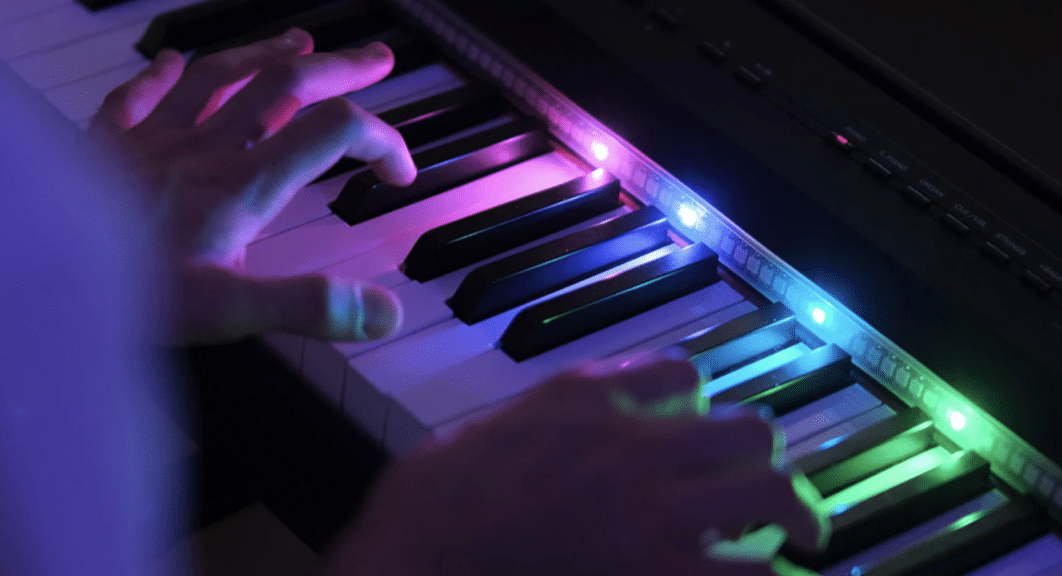
Instrumental melodies are essential for creating atmosphere and emotion in a track, especially in genres that rely heavily on instrumentation.
Again, when developing an instrumental melody, think about how it interacts with other elements of the song, such as the vocal melody or bass line.
A complex melody with disjunct motion can add excitement, while a simpler, stepwise motion might provide a more relaxed vibe.
For example, you can create a melodic line that complements the vocal music by playing in a different octave or rhythm 一 adding layers and depth to the music.
Or, you could use a contrasting instrument or sound to create a counter-melody that weaves around the vocal melody, which is also awesome.
It’ll enhance the overall texture and make the track more engaging.
Using different instruments, like a piano or guitar, can also change the texture of your melody, so experiment with various sounds to find the one that best suits your track.
Remember to keep your instrumental melody memorable by repeating certain melodic phrases while introducing slight variations to keep the listener hooked.
-
Countermelodies
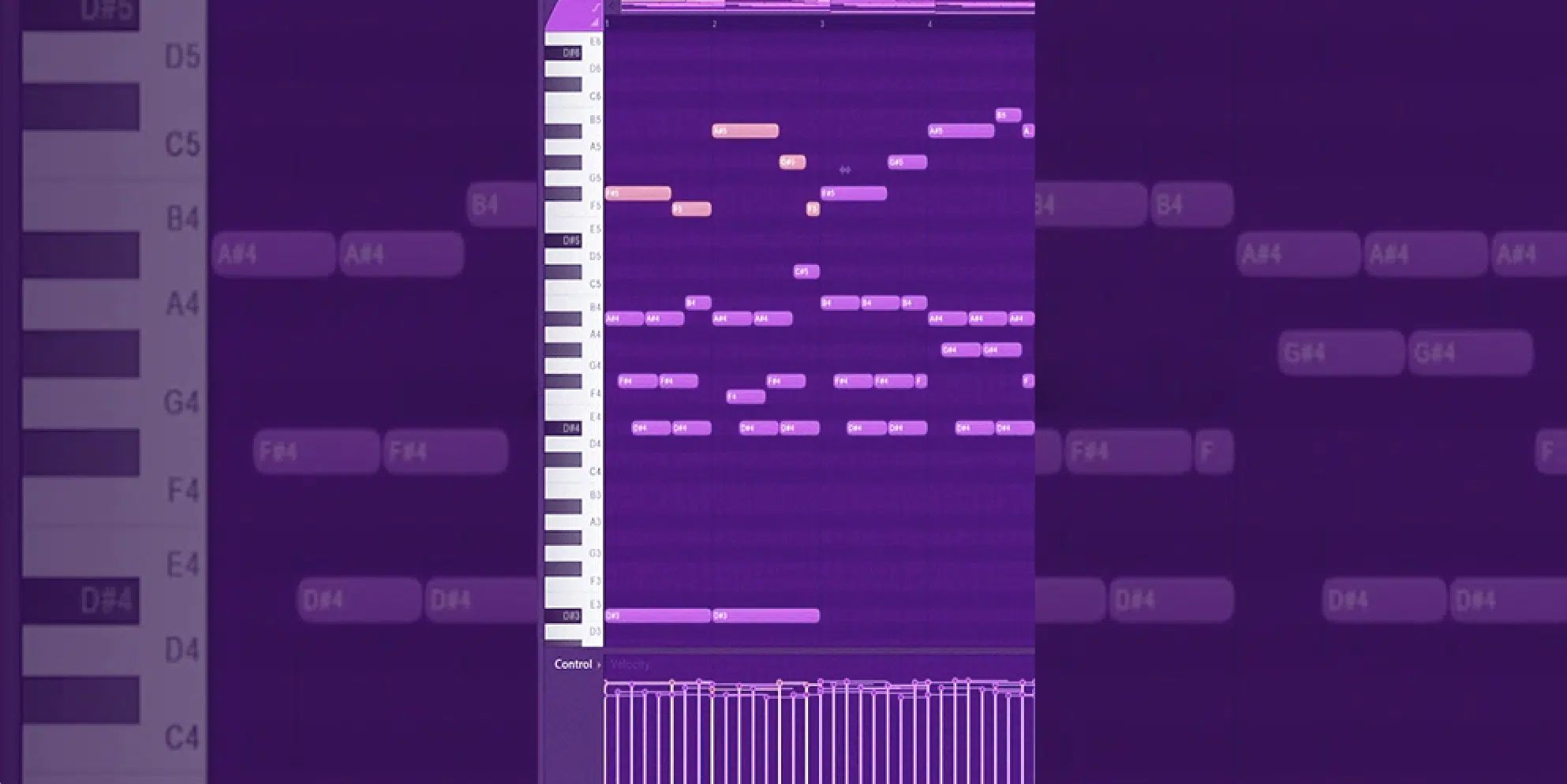
A counter-melody can add richness, complexity, and flair to your music by providing a secondary melodic line that complements the main melody.
When creating a counter-melody, you have to consider how it contrasts with the main melody in terms of:
- Rhythm
- Pitch
- Melodic motion
For example, if your main melody uses conjunct motion, you might want to introduce disjunct motion in the counter-melody to create a sense of tension and release.
Remember, when you’re learning what is the melody of a song, that tension is always super important (that’s true when it comes to any production process).
Start by developing a simple melodic phrase that fits within the chord progression and rhythm of the song…
Then, refine it by adding variations that interact harmoniously with the main melody.
Pro Tip: Play the counter-melody on a different instrument or in a different register, which can help distinguish it from the main melody without overwhelming the listener.
And, always make sure that the counter-melody enhances the overall musical composition, adding depth without distracting from the core elements of the song.
Melodic Structure and Form
Understanding the structure and form of a memorable melody is key for creating one that your listeners really vibe to. These elements provide the foundation for building super impactful melodies and will help you understand what is the melody of a song more clearly.
-
Phrase and Cadence
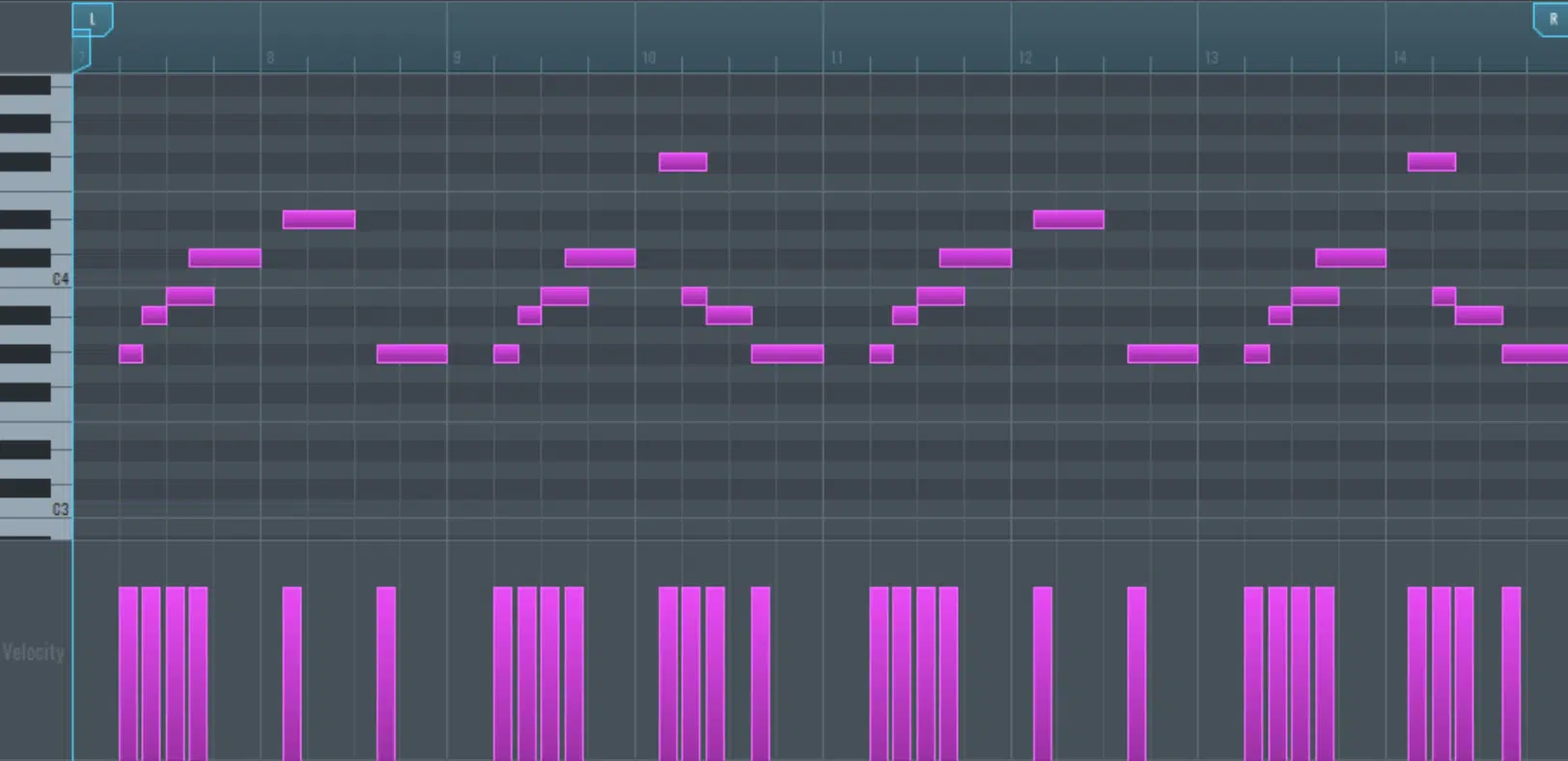
A melodic phrase is a complete musical thought, similar to a sentence in language.
It typically consists of multiple notes that lead to a point of resolution, known as a cadence.
Cadence is all about creating a sense of closure and making the phrase feel complete (it often matches the chord progression).
When writing your own melody, it’s important to vary the lengths of your melodic phrases, because:
- Some might be shorter to convey urgency.
- Others might be longer to develop a more expansive musical idea.
You can use different types of cadences, like a perfect cadence for a strong resolution or an imperfect cadence to leave the listener wanting more.
A perfect cadence is a harmonic progression from the dominant chord (V) to the tonic chord (I), giving a sense of finality and closure.
An imperfect cadence is a progression that ends on the dominant chord (V) or another non-tonic chord 一 creating a feeling of suspense or incompleteness.
Also, make sure to play around with four phrases that build on each other, with the final cadence bringing the melody to a satisfying conclusion, like most melodies.
-
Repetition and Variation
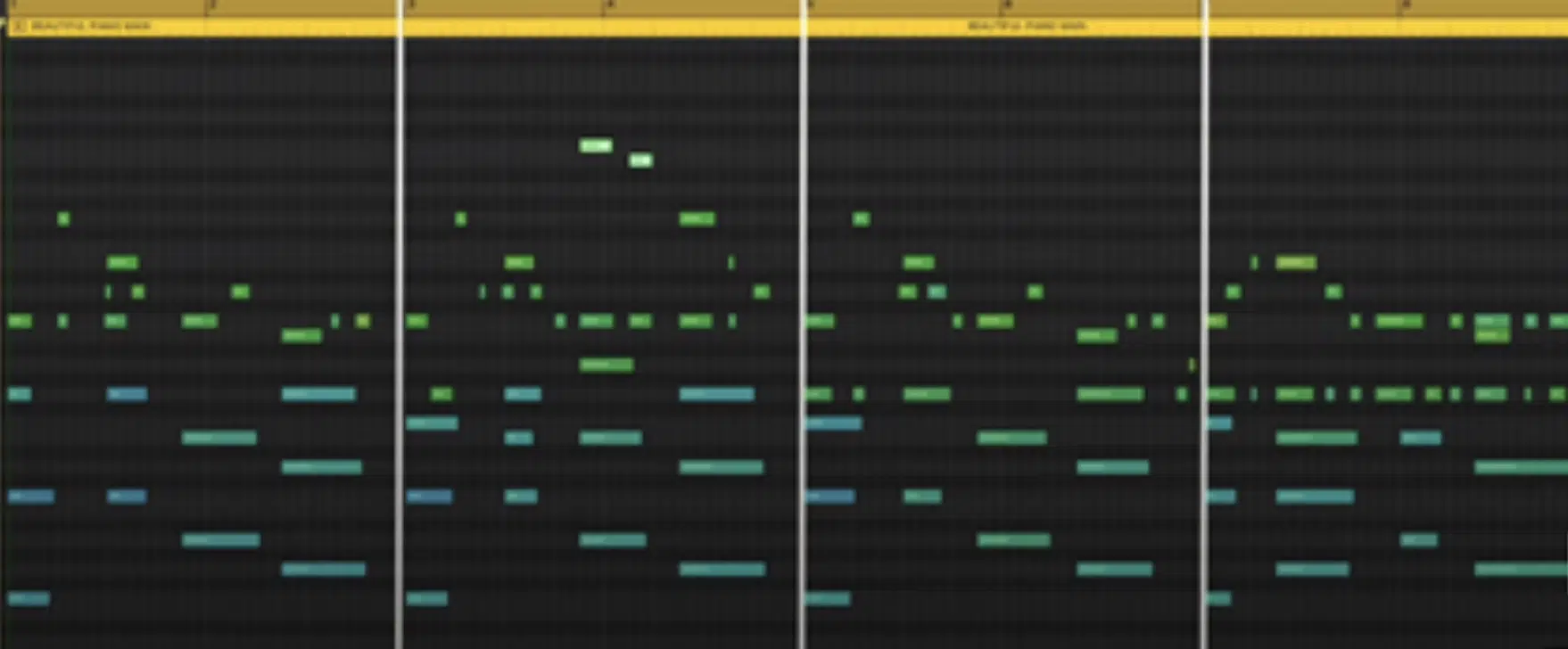
Repetition and variation are everything when it comes to making a melody memorable while keeping it engaging and not boring/basic.
Repetition involves repeating a melodic phrase or melodic line to reinforce the musical idea in the listener’s mind.
This is common in popular music, where the chorus usually features the same melody repeated to create a hook (I’m sure you can think of twenty right off rip).
However, too much repetition can make a melody monotonous, which is where variation needs to come into play.
By slightly altering the rhythm, pitch, or melodic contour of a repeated phrase, you can maintain the listener’s interest while still providing the familiarity.
Because, ultimately, while you surely want some variation, you really need the melody to stick and get stuck in people’s heads.
A good melody strikes a balance between repetition and variation 一 ensuring that the melody remains fresh and engaging throughout the song.
So, if you’re just learning what is the melody of a song, keep in mind that it shouldn’t be too varied, but you definitely want that main familiarity thrown in there.
Writing Your Own Melodies: Advanced Melodic Techniques
When you’ve mastered the basics of melody writing, advanced techniques can help you take your musical compositions to the next level, naturally. So, let’s get into some expert techniques that allow you to add complexity and edge to your memorable melodies, making them truly captivating.
-
Melodic Motifs and Themes
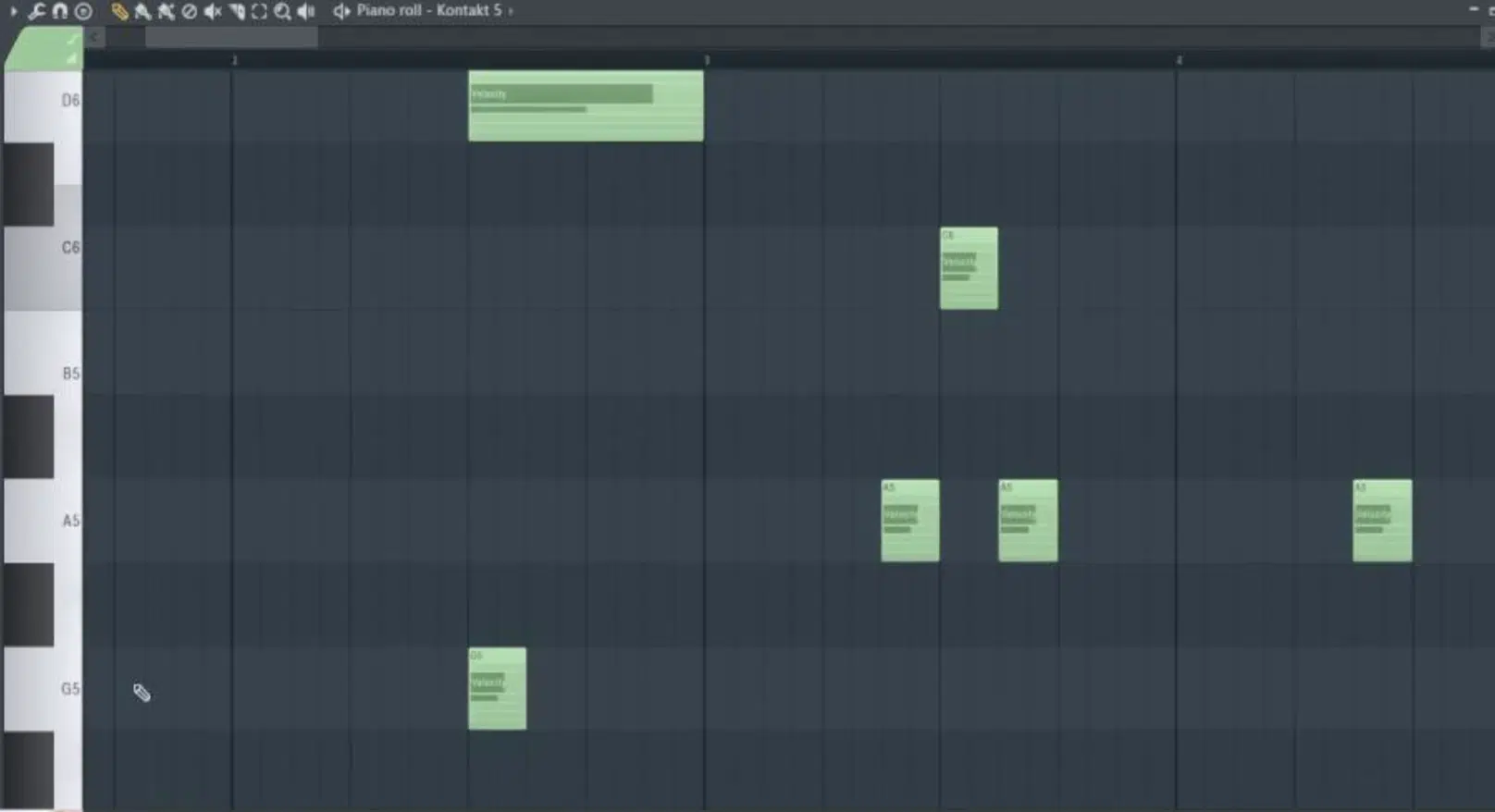
While we already touched on motifs, let’s just quickly recap since your’e going to be writing your very own melodies.
A melodic motif is a short, recurring musical idea that serves as the building block of your melody that are usually just a few musical notes long.
However, don’t let the shortness fool you, as they carry significant weight in a composition (just like music notation).
They can be developed into themes 一 longer, more elaborate sections of music that represent the core/main idea of the song.
To create a strong melodic motif, start with a simple idea (like two notes in a rhythmic pattern) and build on it by introducing subtle changes in pitch or rhythm.
Repeating this motif throughout your song helps create cohesion, while developing it into a theme can provide the melodic foundation for an entire section of your music.
A good example would be introducing the motif in the intro and developing it into a full theme by the time the chorus hits, giving the melody a sense of progression/unity.
-
Syncopation in Melodies
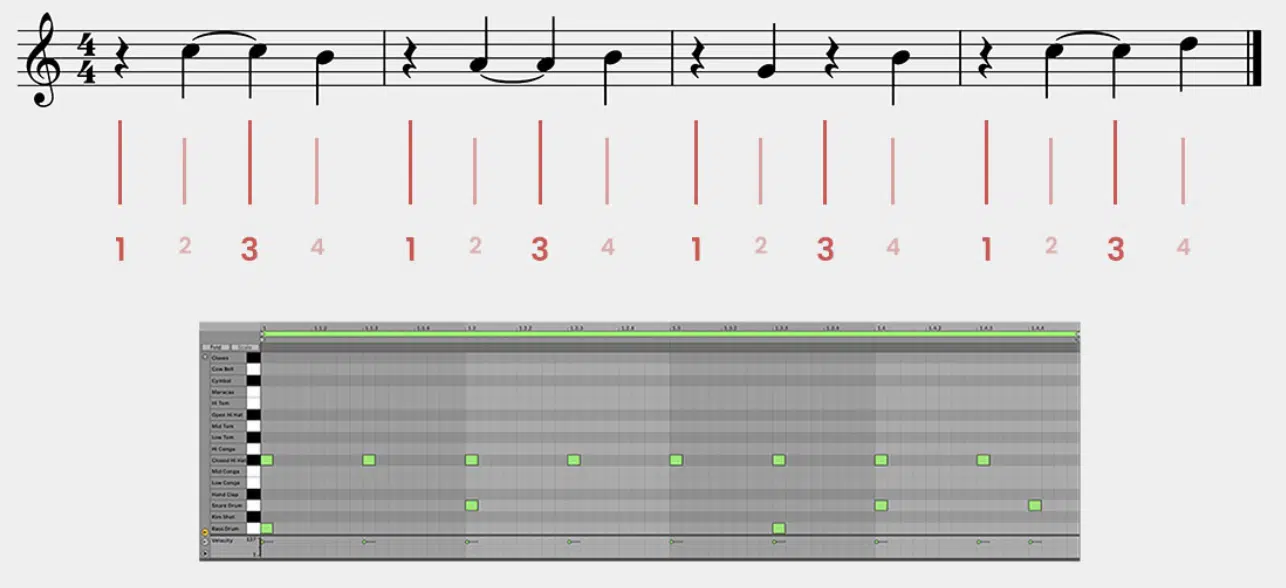
Syncopation refers to placing accents on normally unaccented beats or between beats, creating rhythmic interest and tension in a melody.
In essence, it disrupts the regular flow of the rhythm, making the melody feel more dynamic and engaging.
When incorporating syncopation into your melody, you might choose to place emphasis on an off-beat or use repeated notes that hit between the standard beats of the measure.
This is a super common technique that can be particularly effective in pop music and other genres where rhythmic drive is essential.
For example, you might write a melody in music where the first note of each melodic phrase is syncopated 一 giving the melody a unique groove that stands out.
You could also experiment with modal interchange by borrowing chords from a parallel mode to create unexpected harmonic shifts in the melody.
It’ll add a certain flair and distinctive quality that sets your track apart from the more ‘conventional’ productions (although, it’s a little tricky, so make sure to practice).
Syncopation can add a layer of complexity to your melodies, making them more intriguing and less predictable for the listener.
-
Polyrhythms in Melody
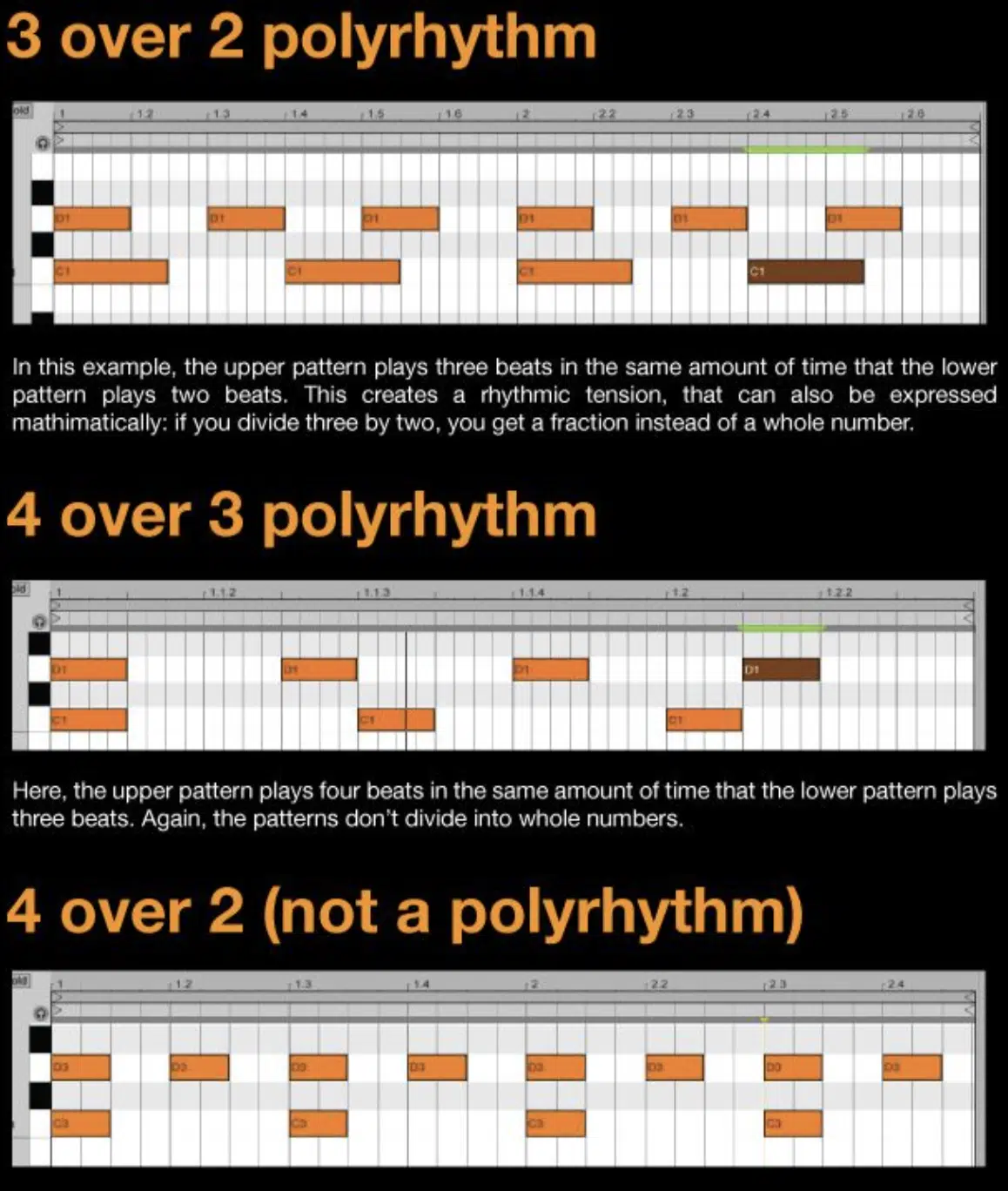
Polyrhythms are exactly what they sound like… the combination of two or more contrasting rhythms that create a layered and complex rhythmic texture in your track.
They’re perfect for adding unexpected groove and movement to your melodic lines.
For example, in a trap beat, your main melody might follow a standard 4/4 rhythm, while a secondary melodic phrase introduces a 3/4 or 6/8 pattern.
It should weave in and out of the primary rhythm for some intrigue.
This creates a syncopated feel that keeps the listener engaged and adds a unique rhythmic twist to the track, which is always a good thing.
In pop or EDM, you could layer a fast, staccato melody over a slower, more drawn-out bass line 一 allowing the polyrhythms to build tension before a drop or chorus.
When applying polyrhythms, it’s key to maintain a balance to ensure that the contrasting rhythms complement each other and don’t overwhelm the listener.
Bottom line, by skillfully incorporating polyrhythms, you can lay down a great melody that is both complex and catchy.
-
Harmonizing Melodies
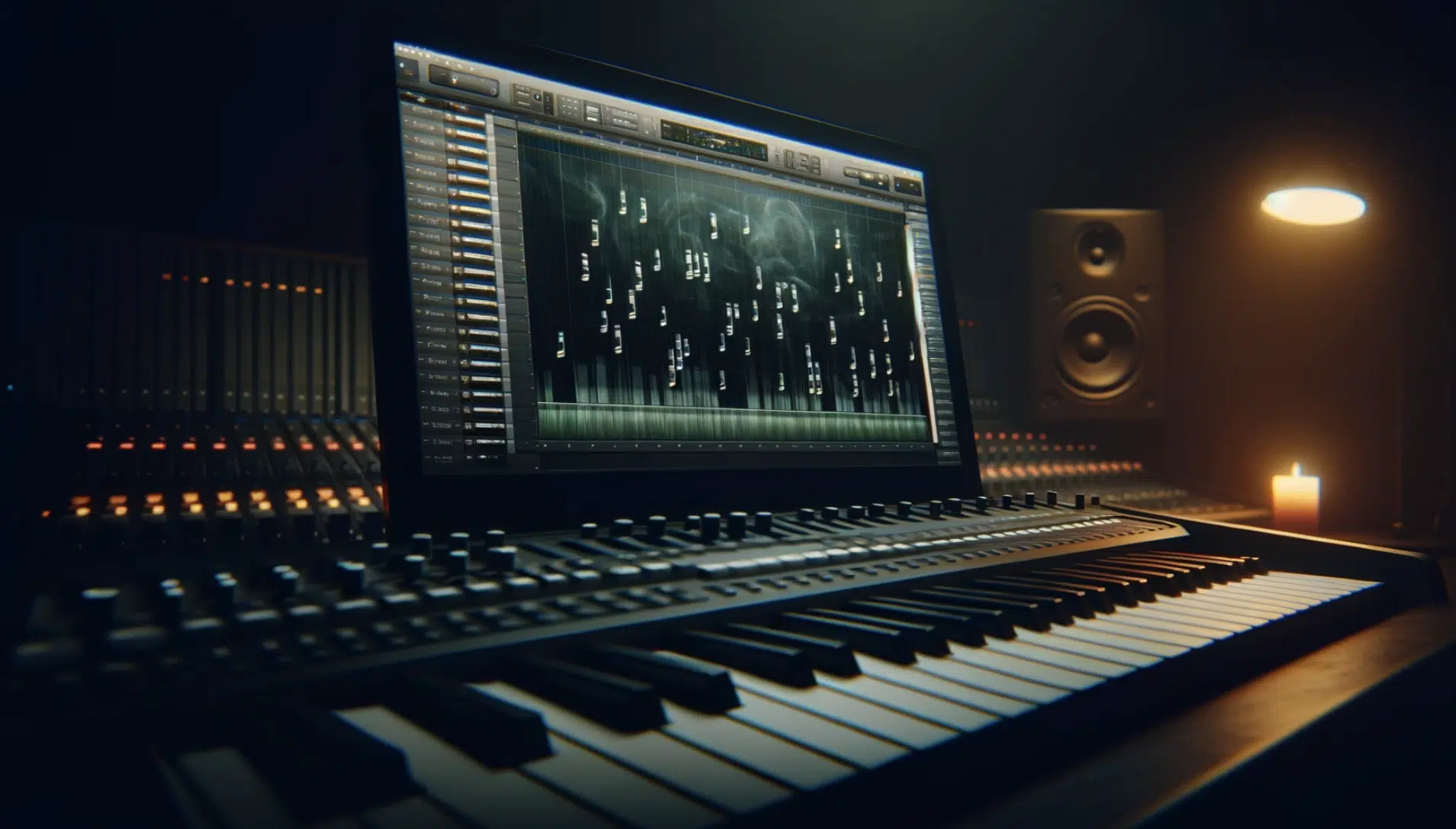
Harmonizing melodies is all about adding additional notes or voices to your main melody to create a more immersive, full, mind-blowing sound.
In pop music, harmonization often involves stacking vocals…
Think of adding a third or fifth harmony above the vocal melody to create that lush, layered effect often heard in choruses.
A great example would be if your main melody hits a C note over a C major chord, you could add an E or G above it, which are the third and fifth of the chord.
This simple harmony can make the melody sound more powerful/impactful.
NOTE: In genres like EDM, you might harmonize your synth melody by duplicating the melodic line and shifting it up a few semitones to create a harmonic layer that adds depth and intensity during a drop.
Just make sure that the added harmonies always complement the original melodic line without clashing, which would sound worse than fingernails on a chalkboard.
It’s all about keeping the overall musical composition on point.
-
Creating Harmonic Interest
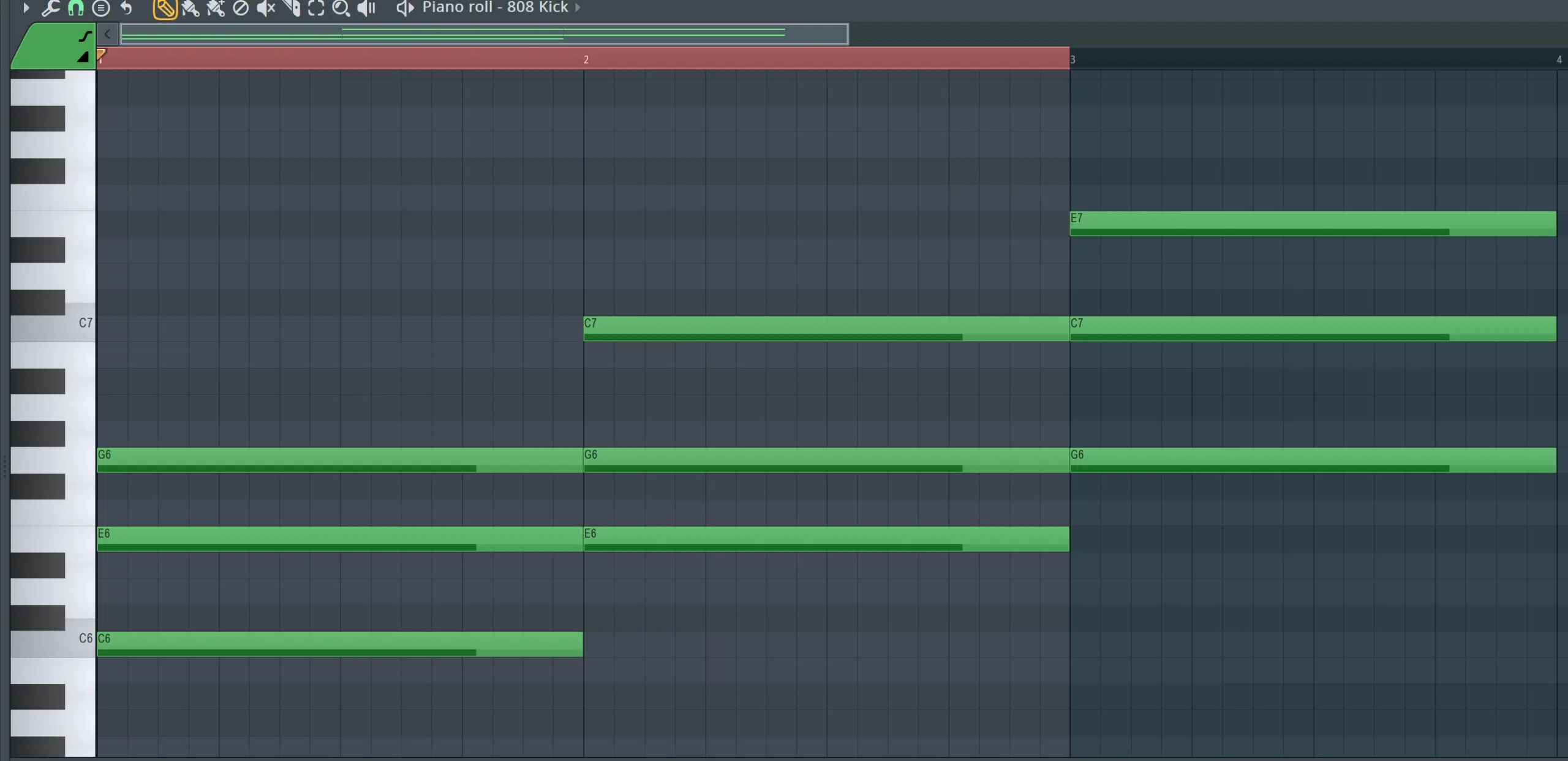
Chord Inversions (hip-hop)
Creating harmonic interest involves using harmony to add emotional depth and keep your melody engaging throughout the track.
One solid technique is to introduce non-diatonic chords (which are chords that don’t naturally occur in the key you’re working in).
For instance, if your track is in the key of C major, throwing in an A-flat major chord can add an unexpected twist that catches the listener’s ear.
In hip-hop, you might use a sampled chord progression that doesn’t match the melody exactly, creating a bit of tension that resolves as the melody progresses.
But again, make sure there is some sort of good relationship so things don’t sound super messy and amateurish.
You can also create harmonic interest by using inversions, where the notes of the chord are rearranged so that the bass note is not the root of the chord.
This can add a subtle shift in tone that makes the melody in music more dynamic.
Also, try adding a counter-melody that introduces dissonant notes or rhythms, which can enhance the main melodic line by creating a dialogue between the two melodies.
What is the Melody of a Song: Final Thoughts
Learning what is the melody of a song is the first step to creating tracks that really stick with your listeners and leave a lasting impact.
Now, with this article, you’ll always be able to lay down captivating melodies, layer them with depth, and harmonize them expertly to enhance the overall emotion of your music.
Plus, use advanced techniques to really blow the competition away and make sure your tracks stand out.
If you’re looking to take your melodies even further, then you’ve got to check out this mind-blowing Free MIDI Melodies pack.
It includes over 300 professionally crafted MIDI melodies across various genres 一 providing instant inspiration and a strong foundation for your own tracks.
You can tweak each melody however you’d like so it fits your unique style and genre.
It also includes bonus chord progressions and basslines, which can help you create a full, cohesive track around the melody, making it invaluable.
You’ll be able to create melodies that are not only catchy and memorable but also rich and dynamic like never before.
So, keep pushing your melodic boundaries and experimenting with new ideas, because remember, it’s all about persistence, hustle, and thinking outside of the box.
Until next time…







Leave a Reply
You must belogged in to post a comment.